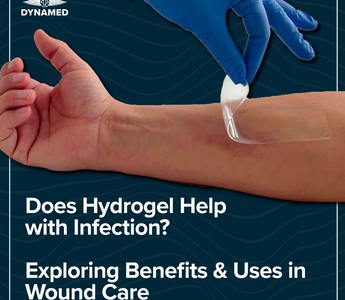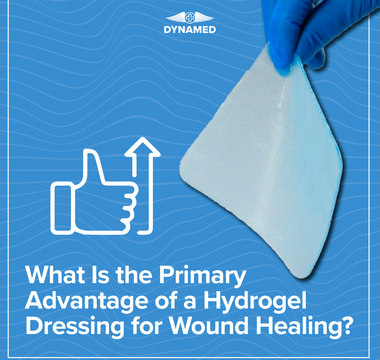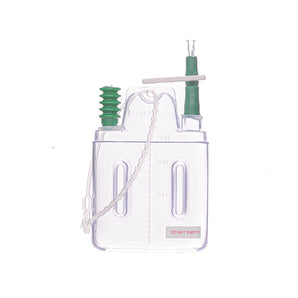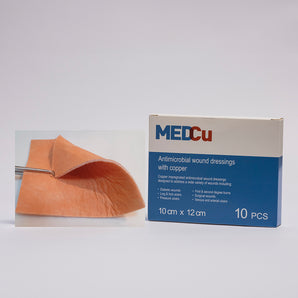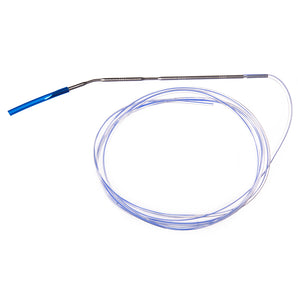In the realm of wound care and surgical innovation, maintaining an optimal healing environment is pivotal. As practitioners and patients alike explore various solutions, hydrogel wound dressings emerge as a compelling option. These dressings are known for their ability to manage dry or minimally exuding wounds effectively, but a pressing question remains: do they help with infection?
Hydrogel dressings provide a moist environment that promotes faster healing by accelerating epithelization and reducing pain. Their semi-transparent, flexible nature allows them to conform to the wound, ensuring comfort and ease of use. Given these benefits, it's crucial to understand whether they also offer protection against infection, a common concern in wound management.
In South Africa, where diverse climates and healthcare challenges exist, understanding the role of hydrogel in infection control could significantly impact treatment outcomes. As we delve into this topic, we'll explore the potential of hydrogel dressings in safeguarding wounds against bacterial threats.
Key Takeaways
-
Hydrogels create a moist healing environment that promotes faster wound recovery, making them effective for dry or minimally exuding wounds.
-
They offer potential infection control benefits, especially when imbued with antibacterial agents like silver ions, which combat bacterial threats effectively.
-
Hydrogel dressings conform closely to the wound site, providing comfort, reducing pain, and enhancing visibility for easier monitoring.
-
Despite their advantages, hydrogels may not be suitable for highly exuding wounds and require careful application to prevent skin maceration.
- Clinical studies demonstrate that hydrogels can effectively reduce infection rates, particularly when compared to traditional dressing methods.
In the world of healthcare, ensuring proper wound care remains crucial, especially given the diverse medical landscapes. Dynamed, South Africa's leading name in both basic and advanced wound care products, stands at the forefront of this essential field. From advanced medical devices to consumables and pharmaceuticals, we deliver comprehensive solutions. But what lies at the heart of our offerings? Let's dive deeper into our remarkable range, including engaging tutorials and insights.
Understanding Hydrogels
Hydrogels are innovative components of modern wound care. They accelerate healing by creating a moist environment, which is key for tissue regeneration. Of course, the pressing question remains: how do these gels work, and why are they so effective?
What Are Hydrogels?
Hydrogels are water-based gels that donate moisture to wounds and offer flexibility and semi-transparency. This unique composition aids in maintaining a moist wound environment essential for improved healing, providing comfort, and enhancing visibility during inspection. Unlike traditional dressings, they keep dry or minimally exuding wounds hydrated, easing any discomfort and promoting tissue regeneration. Moreover, their unique design can also help soothe the skin and reduce pain.
Types of Hydrogels
When it comes to hydrogels, variety ensures tailored solutions:
-
Amorphous Hydrogels: Often packed in tubes, these allow easy application, conforming to the unique contours of different wounds.
-
Impregnated Hydrogels: Embedded in gauze, these provide a more structured form of application suitable for deeper or larger wounds.
- Sheet Hydrogels: Ideal for cooling burns or soothing abrasions, these sheets ensure coverage with consistent moisture.
Beyond hydrogels, our comprehensive range includes hydrocolloid and silver dressings, designed to meet various needs within wound care. Each product is tailored to promote optimal healing, often incorporating antimicrobial properties to reduce infection risks.
Step-by-Step Guidance: Using Hydrogel Dressings
Correct application is vital for optimal outcomes. Here’s a simple guide:
-
Preparation: Ensure the wound and surrounding skin are clean and dry. Use sterile water or saline for cleaning.
-
Application: Gently apply the hydrogel dressing, ensuring it covers the affected area completely. Avoid overuse of pressure to maintain comfort.
-
Securing: Use appropriate secondary dressings if needed, ensuring the hydrogel stays in place.
- Monitoring: Regularly check the wound for signs of healing or any changes in condition.
And there you go—a few straightforward steps to harness the full potential of hydrogels.
Insights and Tips
For those navigating the complexities of wound care, here are some quick insights:
-
Be Diligent with Hygiene: Always wash hands thoroughly before and after dressing changes.
-
Tailor to Your Needs: Choose the right type of hydrogel based on wound size, shape, and level of exudate.
-
Regular Assessment: Keep an eye on the wound’s progress. If you notice any adverse changes, it might be time to consult a professional.
Are you ready to explore our range and see the difference our products make? Visit Dynamed. Whether you're a professional or someone caring for a loved one at home, our advanced wound care solutions offer the support you need. After all, effective care starts with the right products.
The Science Behind Hydrogels And Infections
Understanding the role of hydrogels in infection control is crucial for optimal wound management. Hydrogels have emerged as a powerful tool in advanced wound care, significantly enhancing healing processes.
Mechanism Of Action
Hydrogels are primarily composed of water and hydrophilic polymers that create a moist environment over wounds. This moist environment not only promotes tissue regeneration but also acts as a barrier against pathogens. By maintaining optimal moisture, hydrogels facilitate autolytic debridement, where the body's enzymes naturally remove necrotic tissue. This process helps in clearing debris and reducing the risk of infection. Furthermore, the semi-transparent nature of hydrogel dressings allows for easy wound inspection without removal, reducing disruption to the healing process.
Antibacterial Properties
Many hydrogel wound dressings incorporate antibacterial agents. These agents, like silver ions, provide an added layer of protection against bacterial proliferation. Silver ions possess broad-spectrum antimicrobial properties that are particularly effective against antibiotic-resistant bacteria. They disrupt bacterial cell membranes and interfere with microbial DNA replication, effectively preventing infections. Our use of hydrogels with antibacterial properties is vital in diverse healthcare settings, especially in regions with high infection risks. By offering a two-fold approach—moist wound healing along with antibacterial protection—these dressings enhance treatment outcomes.
Dynamed, South Africa's leading provider of wound care products, specialises in hydrogel dressings tailored to different needs, ensuring effective infection control and promoting robust healing. The application of these hydrogels requires adherence to strict hygiene standards. We recommend cleaning the wound thoroughly before application, ensuring that no contaminants interfere with the dressing's function. Regular monitoring of the wound's condition is essential to identify any early signs of infection.
By investing in the right technologies and practices, such as hydrogels, we ensure that wound care remains at the forefront of infection control strategies. For more information on our range, visit Dynamed.
Applications Of Hydrogel In Treating Infections
Hydrogel wound dressings from Dynamed play a pivotal role in managing infections by creating a moist healing environment that serves as a barrier to pathogens.
Wound Care And Healing
In wound care, the primary goal is to prevent infection while accelerating healing. Hydrogel dressings are especially effective for dry or minimally exuding wounds, as they donate moisture to the wound site, promoting epithelialisation. This moisture-rich environment not only facilitates granulation but also helps maintain an optimal temperature for healing, thereby reducing the risk of infection. Our dressings conform closely to the wound bed, ensuring comprehensive coverage and preventing potential bacterial ingress.
Drug Delivery Systems
Hydrogels can also function as carriers for antimicrobial agents, enhancing their infection-fighting capabilities. These compounds, such as silver ions, can be incorporated into the gel matrix to offer continuous antimicrobial activity directly at the wound site. This targeted delivery system not only combats existing infections but also creates a hostile environment for new pathogens. When applied correctly, our hydrogel dressings provide both immediate and sustained protection against bacteria and other infectious agents.
Incorporating antimicrobial compounds into hydrogel dressings extends their utility beyond mere wound coverage, elevating their status within advanced wound care. This integration of treatment and prevention makes hydrogel dressings a versatile choice for healthcare professionals striving to optimise patient outcomes in various wound scenarios. By offering a solution that addresses both hydration and infection control, these dressings cater to the diverse and often complex needs of wound care patients.
Evaluating The Effectiveness
Assessing whether hydrogel dressings help manage infections in wound care requires examining both empirical evidence and practical outcomes. Hydrogels, known for maintaining a moist healing environment, play a pivotal role, particularly in infection control. We delve into clinical studies and trials to understand their full potential.
Clinical Studies And Trials
Clinical studies show hydrogels, especially those integrating antibacterial agents like silver ions, effectively reduce infection rates in wounds. For instance, a study in the Journal of Wound Care demonstrated that hydrogel dressings with silver significantly lowered bacterial count in chronic wounds compared to non-silver dressings. These findings underline the importance of choosing the right type of hydrogel to maximise antimicrobial efficacy, which is crucial in settings with high infection risk. In addition, newer trials continue to explore the benefits of combination treatments, where hydrogels serve as carriers for antimicrobial medications, offering a dual approach to healing and infection prevention.
Comparing With Traditional Treatments
Traditional treatments like gauze and saline lack the superior infection control properties of hydrogel wound dressings. While gauze might absorb exudate, it can dry out wounds, delaying the healing process and increasing infection risk. Hydrogels, by contrast, maintain moisture balance and temperature consistency, which are essential for optimal healing. Moreover, traditional methods often require frequent changes, thus disturbing the wound bed more than necessary. Conversely, hydrogels, with their longer wear-time and improved patient comfort, reduce intervention frequency, granting wounds more uninterrupted healing time.
Considering these comparisons helps healthcare professionals select appropriate wound care products, such as those by Dynamed, to enhance patient outcomes. Our goal is to provide confidence in using cutting-edge treatments that blend convenience with scientifically-backed effectiveness.
Advantages And Limitations
Hydrogel wound dressings, like those provided by Dynamed, offer significant advantages in advanced wound care, yet they also present certain limitations that users should consider.
Benefits Of Using Hydrogels
Hydrogel wound dressings maintain a moist environment crucial for healing and offer comfort, reducing pain in patients with dry or minimally exuding wounds. By donating moisture, they promote faster epithelization, aiding quicker recovery. They're highly conformable, ensuring they adapt well to different wound shapes and sizes, enhancing their suitability across various applications such as pressure ulcers and burns. Moreover, their semi-transparent nature allows for easy wound monitoring without removing the dressing, striking a balance between accessibility and protection from external bacteria.
Potential Drawbacks And Concerns
Despite their many benefits, hydrogels have some limitations. Their minimal absorption capability makes them less suitable for wounds with high exudate levels. Overuse in such cases could lead to maceration of the surrounding skin. Furthermore, their effectiveness in infection prevention relies on proper hygiene standards during application, as they don't inherently possess antibacterial properties unless specifically combined with additives like silver ions. Users should also consider the regular need for dressing changes to prevent bacterial build-up in moist environments, ensuring that the intended barrier protection remains intact.
Conclusion
Hydrogel dressings undeniably play a crucial role in modern wound care by fostering a healing environment that combats infection. Their ability to maintain moisture and incorporate antibacterial agents makes them a valuable asset in our healthcare toolkit. While they're not suitable for all wound types, their benefits in specific scenarios are clear. By choosing the right dressing and adhering to proper application techniques, we can optimise healing outcomes. As we continue to explore advanced solutions like those offered by Dynamed, we're better equipped to tackle the challenges of infection control in wound management.
Frequently Asked Questions
What makes hydrogel wound dressings effective in improving healing?
Hydrogel wound dressings are water-based gels that maintain a moist environment, which is essential for optimal tissue regeneration. They promote faster healing, reduce pain, and offer comfort due to their flexible and semi-transparent nature. By creating a moist environment, hydrogels facilitate autolytic debridement and support the healing process while acting as a barrier against pathogens.
How do hydrogels help prevent infections in wounds?
Hydrogels prevent infections by creating a moist barrier that blocks pathogens. Some hydrogels incorporate antibacterial agents, such as silver ions, which enhance protection by preventing bacterial proliferation. This feature is especially crucial for wounds in high-risk settings, contributing to an effective infection control strategy.
Are hydrogel dressings suitable for all types of wounds?
Hydrogel dressings are most suitable for dry or minimally exuding wounds, as they help maintain moisture and promote healing processes like epithelialisation and granulation. However, they are not ideal for highly exuding wounds due to their limited absorption capacity. Proper assessment of the wound type is crucial for selecting the right dressing.
What role does Dynamed play in providing wound care solutions?
Dynamed is South Africa's leading provider of wound care products, offering a comprehensive range of solutions, including hydrogel dressings. The company focuses on delivering advanced products that maintain a healing-friendly environment, ensuring optimal wound care and management.
How should hydrogel dressings be applied to ensure effectiveness?
To ensure effectiveness, hydrogel dressings should be applied with strict adherence to hygiene standards. A step-by-step approach includes cleaning the wound, applying the hydrogel dressing, and securing it properly. Regular monitoring and assessment of the wound's condition are essential to manage the healing process effectively.
Are there any limitations to using hydrogel dressings?
Yes, hydrogel dressings have limitations such as a minimal absorption capacity, making them less suitable for highly exuding wounds. Proper hygiene during application is imperative to prevent infection. Despite these, their benefits in maintaining a moist healing environment and comfort make them valuable for certain wound types.

